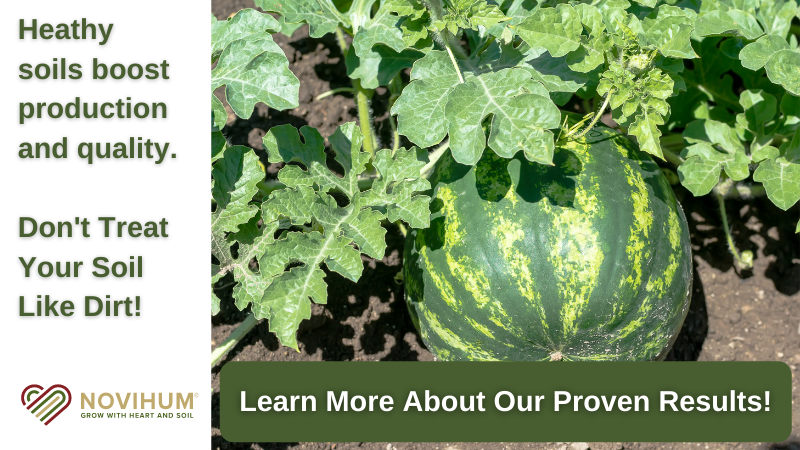It’s Time To ‘Farmer-Up’ For Food Safety
Many vegetable growers in most parts of the U.S. and at all scales of production and marketing channels — whether conventional, organic, or the rapidly increasing number of hybrid-systems of input management style — have put on-farm and postharvest food safety systems in place. With the build-up to and eventual release of the FDA Proposed Produce Safety Rule on Jan. 16, 2013 for public comment, I have had the great opportunity to crisscross California and many parts of the country to interact, listen, and share information about produce safety with widely diverse commodity and regional grower groups.
For a large sector of growers already operating under various, sometimes multiple, audit schemes the proposed regulations and standards present no general alarm. Changes to the proposed Rule, following comment from many stakeholders, is likely but the reality is there are few compliance requirements and prescriptive standards that food safety savvy growers and handlers say will be unmanageable. Certainly, anyone starting from scratch will have challenges, both operational and economic, but there is a lot of flexibility written into the proposed rule. Some of the specifics that rile growers currently functioning under some form of Good Agricultural Practices plan, especially with regard to irrigation water and soil amendment proposed rules, may be modified following the public comment period.
I have encountered many small farm operations already well on the way to laying the foundation for compliance and participating in regional efforts to submit comments and suggest alternative approaches to FDA in those specific areas that are felt to be unworkable and economically burdensome.
Even small-scale direct-marketers that would be legislatively (that Tester Amendment to the Food Safety Modernization Act you have heard about) or initially exempt in the final published rule see business advantages to implementing the spirit and some specifics from FDA and non-regulatory Good Agricultural Practices guidance. Many retailers and restaurateurs purchasing farm-direct are voicing the expectation that all growers entering their “local-grown” programs will be expected to implement food safety systems that fulfill FDA basic criteria and modified audit standards such as that those found in standards benchmarked by the Global Food Safety Initiative (www.mygfsi.com/). In addition, growers looking to enroll in local sourcing of produce for USDA school programs will have to meet USDA food safety program and audit inspection criteria.
Areas Of Concern
Despite the general calm following the widespread high anxiety associated with the uncertainties of what FDA would propose, there are some clear and persistent concerns and perceived key barriers to compliance.
While I agree with the general feeling the Proposed Produce Safety Rule is not the overwhelming shock many growers expected, in the postharvest arena, the proposed Current Good Manufacturing Practice and Hazard Analysis and Risk-Based Preventive Controls for Human Food (Preventive Controls: www.fda.gov/Food/FoodSafety/FSMA/ucm334115.htm) are somewhat confusing and take patience and attention when reading.
Many more grower/shippers that wash, cool, pack, ship, and do extra trimming or value-added packaging are genuinely confused about the expectations and, especially, the economic impact. One point of confusion cited is that the terminology of the proposed rule, particularly in reference to fruit and vegetable handling, is not uniformly consistent with terms generally used in farm operations. Diving into to the weeds of what the proposal entails is beyond the scope of this brief Postharvest Hints column but the key expectations include:
• Any packing operation that currently must register under FDA food facility registration regulation would be included under Preventive Control.
• The operation must prepare and implement a written food safety plan.
• The operation plan includes a Hazard Analysis of known or reasonably foreseeable hazards.
• Risk-based Preventive Controls of identified hazards for washing, cooling, and related process controls, facility and equipment sanitation controls, and a recall plan need to be implemented.
• Evidence of Validation of the effectiveness of preventive control design in controlling each hazard.
• Monitoring, Measurement, and Recordkeeping procedures to document those preventive controls are consistently performed.
• Verification that the validated preventive control, as implemented, is functioning as designed.
• A Corrective Action system to reinstate a preventive control found to have failed to be implemented or to re-evaluate the food safety plan and devise effective preventive controls.
• Even if the food safety plan appears effective, Reassessment is expected at least every three years and at other times as new information on a hazard or a validated preventive control becomes available.
Defining A “Qualified Individual”
One of the current uncertainties of the proposed rule that is being questioned by grower/shippers is that FDA specifies each operation would need to show that a Qualified Individual prepared the food safety plan, developed the hazard analysis, created or identified validation data for each preventive control, reviewed monitoring and other verification records, and conducted or supervised a periodic reanalysis of the food safety plan. Details of the current criteria for a Qualified Individual are found at FDA’s website shown above.
It is easy to become intimidated or overwhelmed with this part of the new proposed Food Safety Modernization Act but they won’t go into effect for at least three years for most grower/shippers and the time to Farmer-Up and face them is now.
One area of postharvest Preventive Controls that every operation that has a wash line with or without hydrocooling should be reassessing is optimal management of antimicrobials added to the wash system. For most small to medium operations, sodium or calcium hypochlorite (bleach) remains the primary water treatment process aide. A key step in the development of a facility-specific preventive control is the estimation of peak chlorine demand over a range of typical operating conditions.
Peak chlorine demand is the maximum amount of chlorine in a batch of water that is “used up” by soil and organic materials added with product during washing or cooling. This is also called the Break-point: the point where adding more bleach to the system allows a residual free chlorine amount to be measured and adding more bleach causes the free chlorine levels to rise (See Figure 1). Understanding your system chlorine demand helps to:
1. Minimize guess-work on dose
2. Be more effective in preventing cross-contamination
3. Predict frequency/timing of routine water turn-over
4. Provide “take-action” triggers for non-standard dose monitoring
In addition, here are some simple steps to estimating chlorine demand for small batch wash water.
1. Make up a simulated wash volume with no bleach; typically at least 20 gallons.
2. Add harvested product and agitate the water.
3. Add bleach small amounts of and mix for approximately 15 seconds.
The pH is not important to measure for this purpose but would be in commercial operation (pH ideally between 6.0-7.0).
4. Measure free chlorine with a test strip if that is what is normally used or, better yet, with a titration kit.
5. Repeat until a target free chlorine level hits 5 ppm.Repeat free chlorine measurement in two minutes with no added bleach. If you are still at 5 ppm you’re done; if not at 5 ppm repeat steps three through 5.
6. Repeat with “dirty” product on same harvest load or repeat as conditions change over the season. For example, muddy conditions, if they are likely to occur, different soil textures (sandy loam to muck soil), or typical presence of leaf trash or other non-product organic matter.










